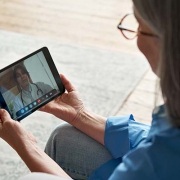What Happens When Your Doctor Leaves Your Health Plan?
A doctor’s visit for most people is an important event. Often, you must explain your ailment quickly and succinctly, trust that your doctor has your best interests at heart and will keep your confidentiality; and make yourself vulnerable and talk about health issues that may be uncomfortable. Having a good relationship with your doctor can alleviate all these issues and can even increase the quality of your healthcare. So, you have a good relationship with a doctor you like, and you find out he is no longer in your health insurance network. Now what?
First, let’s examine why doctors leave health insurance networks. Usually, doctors leave health insurance networks for normal reasons such as retirement or if they move geographic locations. They are professionals, after all, and just as you probably have had to move to a new job, they do the same. Sometimes, there are other more technical reasons, such as if the doctor is unhappy with how the health insurance network conducts business. You’ll most likely be warned ahead of time if your doctor is leaving your network so you have time to plan, however, your doctor and your health insurance provider are not legally obligated to inform you if he is no longer covered. Unfortunately, huge surprise medical bills are all too common and these can leave you financially crippled for years. This is why it is so important when you reach your open enrollment dates each year that you call your doctor’s office and ensure your doctor is still covered under your plan.
So, what do you do if your doctor leaves your network? You may have continuity of care protection, which enables you to retain the same level of care from your doctor, for the same copays and fees, temporarily. If you are a senior who participates in a Medicare Advantage plan, you have the option to leave your health care network if your doctor does and if the network change is “considered significant based on the [effect] or potential to affect current plan enrollees” according to the Centers for Medicare and Medicaid Services guidebook. If you are currently covered under a private plan and are considering switching, it is prudent to call your doctor’s office and ensure they are covered under the new plan you are considering.
What if you can’t switch plans? Often, doctors will allow you to pay cash for your visits. You may be able to negotiate a reasonable cash price with your doctor because they won’t have to bill your insurance, which would save them time and administrative costs. If your doctor’s cash price is relatively expensive, it may still be worth it to you to maintain continuity of care.
If the previous options are out of the question for you, the next best thing to do is just to ask your doctor if they have any referrals. After all, your doctor will know your situation best and how to provide the best care and may know someone else who will be a good fit for you.
Having a doctor you like and trust can be such a relief and it’s always an unfortunate circumstance when your health insurance network no longer covers that doctor. Fortunately, there are ways you can plan for this and methods to make a smooth transition to a new doctor. If you need assistance in this process or have questions about anything you have read, please reach out to our office. Please contact our Ruston, LA office by calling us at (318) 255-1760 or schedule an appointment to discuss how we can help with your long-term care needs.










